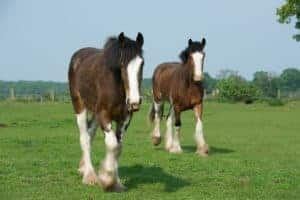Cold Weather Challenges for Horses With Osteoarthritis
Plunging temperatures, snow, and freezing rain can trigger joint discomfort. Here’s how to keep your horse comfortable.
Share
ADVERTISEMENT

Work with your veterinarian to develop a treatment plan that will help your horse feel his best in any type of weather. | Photos.com
When a horse suffers from OA, the cartilage, bone and soft tissues in the joint deteriorate. These changes cause pain, deformity, loss of motion, and decreased function.
Hoyt Cheramie, DVM, MS, Dipl. ACVS, senior equine professional service veterinarian for Boehringer Ingelheim, points to these clinical signs to watch out for:
- Decreased activity or mobility;
- Stiffness or decreased joint movement;
- Heat;
- Swelling;
- Pain; and
- Lameness.
There is no cure for OA, but clinical signs can be managed
Create a free account with TheHorse.com to view this content.
TheHorse.com is home to thousands of free articles about horse health care. In order to access some of our exclusive free content, you must be signed into TheHorse.com.
Start your free account today!
Already have an account?
and continue reading.
Share
Related Articles
Stay on top of the most recent Horse Health news with

















